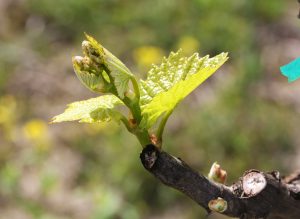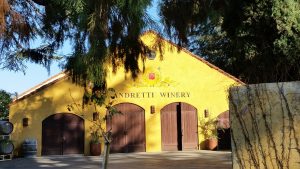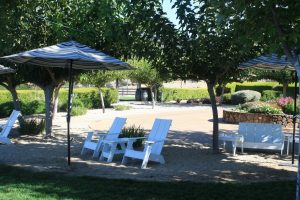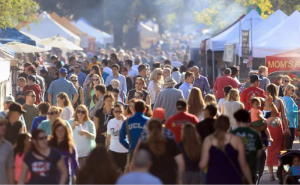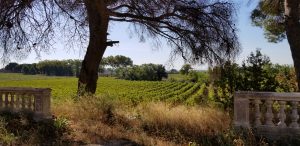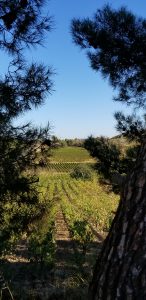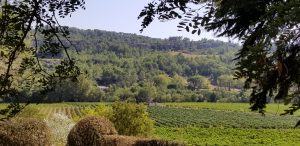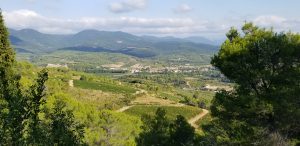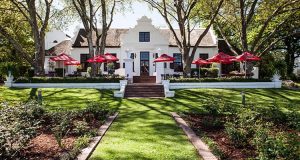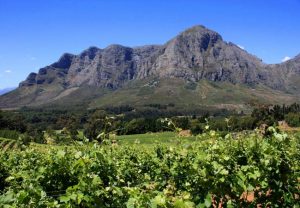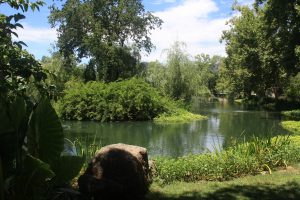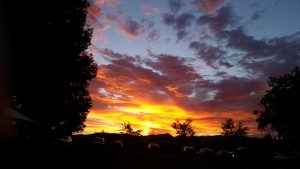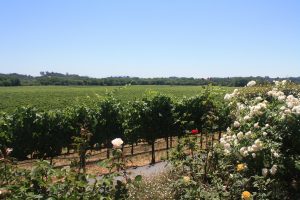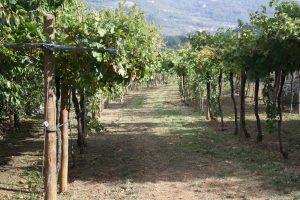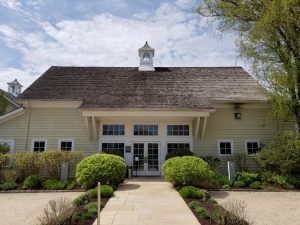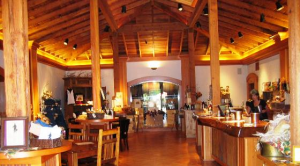Maybe March comes in like a lion where you live, but it’s definitely lamb-like in Napa/Noma. The US Weather Service says that the average daily temperature in Napa tops out at 67o. There’s just enough rain to make the flowers – and the grape vines – grow. Everything is coming alive again, and all’s well with the world. And if you travel to Napa/Noma in March you can see it and even participate in it a bit.
Bud break in March. Photo courtesy of flickr.com.
In particular, March is the time of year in winemaking known as “bud break”. The leaves are on the vines and the tiny buds on the vines begin to swell up and send out shoots. The brownness of winter gives way to a light green. The annual cycle that leads to barrels full of wine starts anew.
However, it’s not all green. There’s a lot of yellow, too, in the form of mustard flowers, which begin to blossom in late January and reach their peak in March. Some people think (okay, we used to think) that this was a trick that vineyard managers used to enrich the vines. But no, it’s just because it’s pretty and vineyard managers like things to be pretty as much as tourists do.
Photo courtesy of Wine Country Inn
March is an especially good time of year for tasting the new releases from many of the best vineyards. If you do the math, you’ll see that wines aged in barrels for 16 months from harvest (i.e., September) reach maturity at the end of January. Allowing a month for getting it out of barrels and into bottles, you’ll have the chance to taste many of the newest wines in March. At the same time, there will probably be many bottles left from the previous vintage at some wineries, so you’ll have the opportunity taste wines that have a little maturity to them.
With the crazy weather patterns that are typical of Napa/Noma, you may well want a winter coat in the mornings in March, as well as in the later evening. But by midday, you’ll shuck the outerwear and visit wineries in your shirtsleeves. Overall, it is wise either to wear a sweater or wrap it around your neck.
There are no national holidays in March, so hotel rates are a little lower than in the high summer season. On the other hand, crowds do begin to show up on weekends, so be prepared for more crowded tasting rooms than you will find in the coldest winter months, but less so than in summer.
There is, of course, St. Patrick’s Day in March. Napa/Noma doesn’t do it up like New York or Chicago, but there are places that celebrate rather boisterously. One such is Hurley’s in Yountville. Now, a hurley is the lethal instrument used to play Gaelic football, so this restaurant/bar is honor-bound to make a St. Pat’s statement. (It’s also one of our favorite restaurants in Napa Valley.)
So see if you can find a shamrock among the mustard flowers and enjoy your time wine tasting in Napa/Noma in March.
